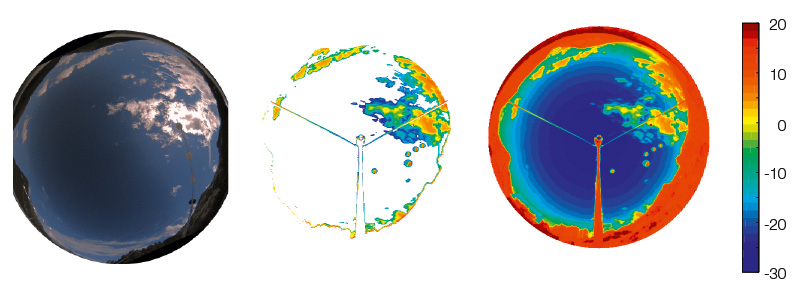Overview
The Infrared Cloud Camera (IRCCAM) measures the thermal emission of the atmosphere in the 8 – 14 µm wavelength range in order to determine the fractional cloud-cover during day and night, as opposed to visible cloud cameras which only operate during the day.


